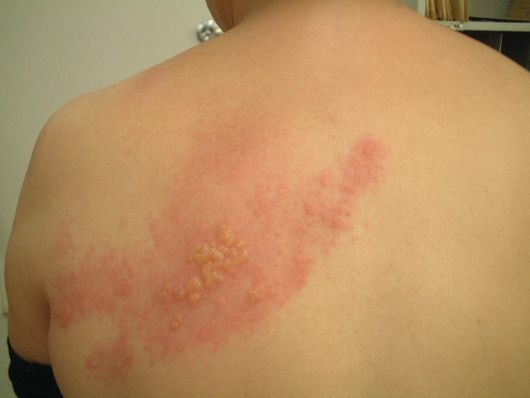Now that there is a vaccine for chicken pox, fewer children will experience that dreaded childhood disease. But a word of caution here...whether you had chickenpox or the vaccine, you can still contract a case of shingles! The shingles are actually a re-activation of the same virus (herpes zoster)...it never really leaves you once it's introduced to your body. It simply goes into a dormant state after a case of chicken pox or a chicken pox vaccination.
Many years later this, same virus can re-awaken and cause a very itchy, blistery rash on one side of the body. Pain can develop in the area of the rash. Flu like symptoms can occur at this time. Over the course of several weeks, most of the problems subside. However, some people experience problems for months to years after such an infection.
If you do become afflicted by a case of shingles, here are some common sense tips from the American Academy of Dermatology:
Consult a physician as soon as possible if you have a rash that you think could be shingles. There are antiviral medications available. If treatment is initiated within 72 hours of outbreak, these medications can shorten the course and decrease the severity of symptoms.
 |
| Shingles Rash |
Many years later this, same virus can re-awaken and cause a very itchy, blistery rash on one side of the body. Pain can develop in the area of the rash. Flu like symptoms can occur at this time. Over the course of several weeks, most of the problems subside. However, some people experience problems for months to years after such an infection.
If you do become afflicted by a case of shingles, here are some common sense tips from the American Academy of Dermatology:
Consult a physician as soon as possible if you have a rash that you think could be shingles. There are antiviral medications available. If treatment is initiated within 72 hours of outbreak, these medications can shorten the course and decrease the severity of symptoms.
- Apply cool wet compresses directly to the rash for cooling relief.
- Calamine lotion can be applied to the rash and blisters.
- Cover the rash with a bandage/gauze dressing.
- Wear loose cotton clothing over the area of the rash.
- Be aware--you may be contagious, especially to pregnant women and those who have never been exposed to chicken pox virus.
- Talk to your doctor about the shingles vaccine if you are over age 50.
Sources: Digital Journal.com; pyroenergen.com
Comments
Post a Comment